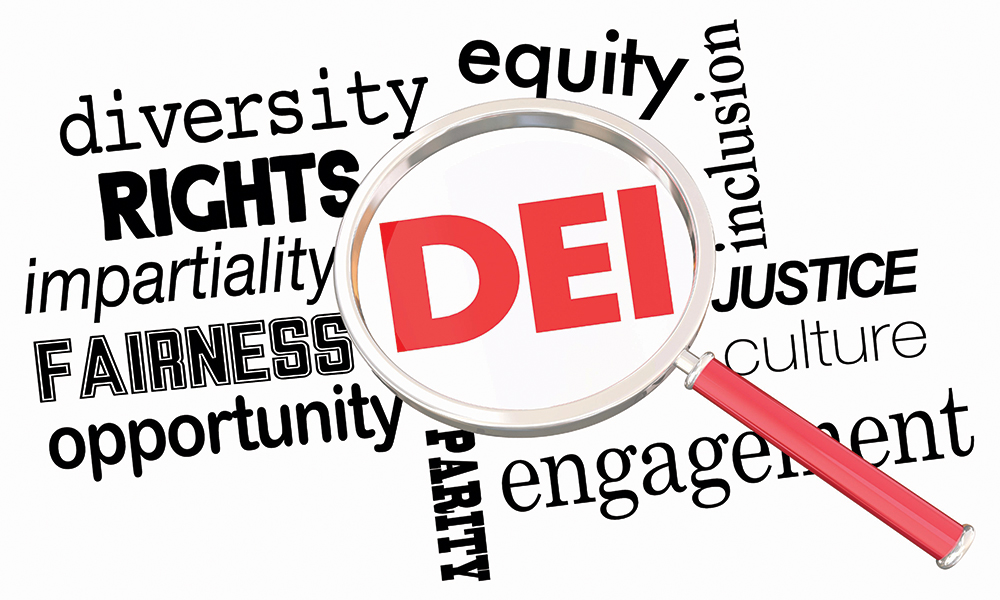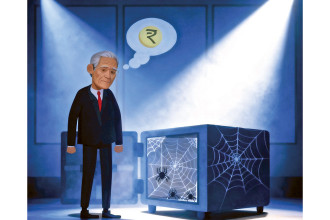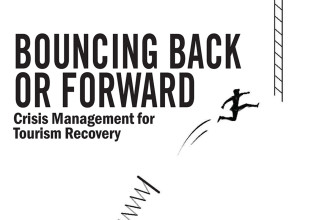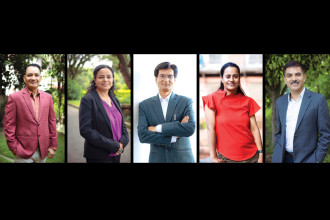
Organisational frameworks like Diversity, Equity and Inclusion (DEI) that promote ‘fair treatment and full participation of all people’, particularly groups ‘who have historically been underrepresented or subject to discrimination’ on the basis of their identity such as gender, culture, ethnicity, religion, disability, age, etc, are perceived as major assets to fulfil the organisational goal of reducing the cost of employee turnover as well as increase productivity.
Globally, an increasing number of companies have been focusing on diversity to enhance organisational performance. McKinsey’s latest analysis of 2023 shows that companies with greater diversity on their boards of directors are more likely to outperform financially.
The same report also reveals that companies with women representing more than 30% on their leadership teams significantly outperform those with lower representation. Similarly, companies in the top quartile for ethnic diversity on executive teams have a 27% financial advantage over others. The business case for gender diversity on executive teams has more than doubled over the past decade. Each of McKinsey’s reports from 2015, 2018, 2020 and 2023 has found a steady upward trend, tracking ever greater representation of women on executive teams.
McKinsey has added that because of the gender disparity in early promotions, men end up holding 60% of manager-level positions in a typical company, while women occupy 40%. Since men significantly outnumber women, there are fewer women to promote to senior managers, and the number of women decreases at every subsequent level.
Sustainable Business Networks and Consultancy in their latest report has revealed that Gender inequality in the workplace also remains a key issue in many countries around Asia-Pacific region, with women being underrepresented in leadership positions. They provided examples of Japan and South Korea for being consistently ranked lowest in terms of gender equity among leading economies and this gender gap is often a DEI priority in the region.
A research paper from Researchgate 2023 revealed that through its secondary information, only 28% of senior management roles worldwide are occupied by women.
According to a Deloitte study, 71% of the organisations asked said they have formal programmes in place, indicating that diversity and inclusion initiatives are becoming increasingly common in enterprises around the world. However, just 12% of workers in these businesses think that their company’s efforts to promote diversity and inclusion are successful globally.
World Bank’s Women Business and Law 2023 report states that, “Today, nearly 2.4 billion working-age women live in economies that do not grant them the same rights as men.”
As per the economic survey of 2021/22, the Nepali government has been adopting a gender responsive budgeting system. The share of direct gender responsive budget in the total budget has surged from 11.34% in Fiscal Year 2007/08 to 39.49% in FY 2021/22.
The constitution of Nepal also emphasises diversity, equity and inclusion as one of the priorities. The constitution states that the state shall not discriminate against citizens on the grounds of origin, religion, race, caste, tribe, sex, economic condition, language, religion, ideology or on other grounds and has introduced various reservation policies. It also states that at least one-third of members of the federal parliament should be women. Similarly, at least one-third of members of the State Assembly should be women and the President or Vice President to be from different genders or communities. Likewise, at least one woman should be either the Speaker or Deputy Speaker to the House of Representatives and one woman either the Chair or Vice Chair of the National Assembly. Article 182 also provisions one woman should be either State Speaker or Deputy State Speaker. At least five members of the Municipal Executive should be women and three members from the Dalit or other minority communities.
To ensure gender equality and women and girls empowerment, the constitution of Nepal has formed a constitutional body, National Women’s Commission, and other constitutional bodies to monitor the implementation of laws and international treaties related to empowerment of people who need an extra effort to come to the forefront. Though there are some practices of inclusion and reservation mostly in government institutions, diversity is not well maintained.
As per the Civil Servant Act, only males and females can serve the nation. The Federal Civil Servant Bill that has been registered in the Parliament also does not mention the LGBTQIA+ community when it comes to government jobs.
A report published by Nepal Outlook, an informal sector research and study centre portal, reveals the ratio of women in various leadership positions. They shared that out of total police personnel recruited, only 10.97% are women. The data from Nepal Medical Council, December 2022, reveals that out of the total number of doctors registered in MBBS and BDS, only 37.48% are women.
Similarly, only 29.46% of specialised doctors are women.
According to the National Economic Census 2018, Analytical Report on Women in Business, women’s participation in decision-making in the private sector is just 29.61%, while women’s participation in the cooperative sector is higher (51%) than other sectors.
As per The FarSight, an internet domain of FarSight Inc, “Out of 28 CEOs and 26 Deputy CEOs from 28 banks (27 A-class commercial banks and Nepal Infrastructure Bank), only four are women. Out of the 155 provincial heads, only six are women, accounting for only 4%. Out of a total of 3,322 branch managers, 11% are women. While Kathmandu valley sees a higher rate of women as branch managers at 29% or 236 in a total of 804 branches, the number significantly reduces to 4.37% in branches outside the valley which is 126 out of 2,880 branch managers.
‘Female Journalist in Nepal’, a study conducted by Sancharika Samuha reveals that only 25% of journalists around the country are women. Out of this, 47.8 % work in FM radio and only 11 % are in editorial leadership.
It is found that lack of mentorship, awareness and poor education and skills, traditional gender roles, patriarchal mindset and workplace harassment, discrimination has been contributing to limiting potential for growth and success of those who are underrepresented in Nepal.
Implementing proper educational planning for all, diversity and inclusion training programmes, establishing zero-tolerance policies for discrimination, and encouraging open and honest discussions about these issues can help. The organisations can also take steps such as setting targets for gender diversity, implementing flexible work arrangements, and providing mentorship opportunities for those women who are underrepresented and other minorities to increase their representation in leadership positions.
DEI plays a vital role in making individuals valued, welcomed and respected. Data have shown that a company’s commitment to DEI can result in even more benefits than sourcing talent and building effective teams. Utilising a diversity, equity and inclusion strategy can give any organisation an edge over competitors and strengthen the bottom line.
A diverse workforce should be seen as a competitive advantage rather than just a legal constraint. DEI must be promoted for the good of any organisation rather than a legal mandate. In this edition of Business 360, we spoke to a few professionals to gain their perspectives on the scenario of DEI in their organisations.
What are the benefits of diversity in an organisation?
Spriha Bhattarai: We live in a world full of diversity, and with diversity comes different ways of living, perspectives and ideas. Combining that into the life of a product would be an organisation’s biggest benefit.
Sneh Rajbhandari: Diversity in an organisation brings a multitude of benefits. Firstly, it fosters innovation and creativity by bringing together individuals with different perspectives, experiences and backgrounds, leading to a broader range of ideas and solutions to complex problems. Additionally, a diverse workforce enhances employee engagement and morale, as it creates an inclusive environment where all our associates feel valued and respected. Moreover, diversity improves decision-making processes by promoting a variety of viewpoints and reducing the risk of groupthink. Furthermore, it enhances the company’s reputation and attractiveness to potential employees and customers, demonstrating a commitment to equality and inclusivity. Ultimately, embracing diversity enables us to better understand and serve diverse markets and communities, driving overall success and competitiveness in today’s globalised world.
Susit Dhakal: Diversity makes a team smarter and innovative. A diverse team is much more likely to remain objective while making decisions due to its access to diverse perspectives. Additionally, when you have a pool of people representative of different identities this environment encourages innovative thinking increasing the intellectual potential of an organisation. Such a diverse workplace will keep team members’ biases in check and question their assumptions. A diverse team brings out innovative ideas and skill sets for programme design and implementation.
Niraj Sharma: Diversity within an organisation serves as a cornerstone for fostering innovation, driving creativity, and enhancing overall performance. By embracing a multitude of perspectives, backgrounds and experiences, companies can tap into a rich reservoir of ideas and approaches. This diverse viewpoint cultivates an environment where innovative solutions merge more readily, challenging the status quo and pushing boundaries. Moreover, diverse teams inherently possess a broader range of skills and talents, enabling them to tackle complex problems with agility and adaptability. The inclusivity in diverse workplaces fosters a sense of belonging among employees, leading to higher levels of engagement, satisfaction and retention. Additionally, organisations that prioritise diversity demonstrate a commitment to social responsibility and equality, which can enhance their reputation and brand image. On the part of customers, by understanding and reflecting the diversity of their customer base, companies can better serve their needs, ultimately driving business success. Thus, embracing diversity is not just something that you do because it is morally good, but it is undoubtedly something that makes business sense. In essence, diversity isn’t merely a checkbox to tick – it is a strategic imperative that fuels innovation, drives performance and ensures sustainable growth in today’s dynamic business landscape.
What is your organisation’s approach to DEI?
Spriha Bhattarai: Impact is an essential part of Outside. Diversity, equity and inclusion comes under impact. As part of this, we try to create as diverse a team as possible with the inclusion of people from diverse ethnicities and religions. It all starts with the hiring process, where an extra effort is made to reach out to candidates of different backgrounds.
Sneh Rajbhandari: At CCBN diversity, equity, and inclusion aren’t just buzzwords; they are integral aspects of our organisational DNA. We recognise that true diversity encompasses gender, age, ethnicity, location and culture, and we are committed to fostering an environment where every individual feels valued and empowered. Our dedication to DEI begins at the highest levels of leadership, with policies and targets firmly in place to ensure representation across all demographics. Our HR team includes a dedicated DEI associate whose primary focus is to champion these initiatives, ensuring that they are not just talked about, but actively pursued and celebrated.
-1712729837.jpg)
I believe, leaders of organisations should be made aware of unconscious bias and efforts should be made within an organisation that proper feedback is both given and taken and key opportunities are distributed across the team.
Spriha Bhattarai
Senior QA Engineer, Outside Tech
Susit Dhakal: In Daayitwa, when we think of diversity, we consider five areas. The five areas that we cover are geographic, gender, ethnicity, economic and political. When we mean political, we mean diversity in political thoughts. We incorporate DEI in the recruitment and hiring process, programme implementation events and even within our leadership team. More than 50% of the managers and coordinators within our organisation are women. Our staff members are representative of different backgrounds from different parts of Nepal. Daayitwa has implemented its programmes in all seven provinces of Nepal. We work closely with municipalities and rural municipalities throughout Nepal. Our work is rooted in working at the grassroot levels which directly adds to the national decentralisation agenda. Daayitwa’s hub office for the entrepreneurship programme is in Butwal, Lumbini Province. And through this, we do a lot of work with rural entrepreneurs particularly women and other marginalised groups. We also work with parliamentarians from all political parties in a non-partition way. These are some of the ways through which we practice the five types of diversity methods which I previously mentioned.
Niraj Sharma: NMB Bank adopts a comprehensive approach to diversity, equity, and inclusion through its Gender Equity and Social Inclusion (GESI) plan: The plan outlines strategies to promote diversity, empower marginalised communities and advance gender equality across its workforce, customers, and communities. The bank focuses on attracting, developing, and retaining a gender diverse workforce by embedding diversity principles in recruitment policies, and investing in capacity building so as to create a balanced gender mix not just in terms of numbers but also in terms of representation across different functions and managerial levels. Furthermore, the bank emphasises on providing equitable support for diverse talents to succeed and progress. Implementing programmes like Women Leadership Development Programme and mentorship arrangements also fosters an inclusive banking ecosystem. With GESI, the goal now is to achieve a 50-50 gender mix by the year 2027. Additionally, while the bank’s current focus remains on gender equity, the plans in coming years are all set to ensure that diversity on the part of employees, customers and community are reflected in terms of disability, age and geographical regions as well. Further, the bank plans to ensure transparency and accountability in achieving our DEI goals, with analysis of gender-segregated data and development of discourse around GESI both internally and externally.
What are some common challenges you face to secure DEI values in the workplace?
Spriha Bhattarai: The first challenge I have seen is to get the message out to the broader audience. The battle between DEI and skill set is always there. The second challenge is that while focusing on DEI, skill set also plays a vital role in acquisition and it is tough to maintain a balance between the two.
Sneh Rajbhandari: Securing DEI values in our workplace poses significant challenges, with unconscious bias standing as a major obstacle. Moreover, operating in a culturally diverse country like Nepal introduces unique cultural barriers that require careful navigation. Encouraging a mindset shift towards inclusivity among employees also proves to be challenging. Furthermore, the infrastructure limitations inherent in the manufacturing industry add another layer of complexity to our efforts. Despite these challenges, our commitment to fostering diversity, equity and inclusion remains steadfast, driving us to continuously adapt and innovate our strategies for a more inclusive workplace culture.
Susit Dhakal: There is a lot to do but there are limited resources. So, I would say that this is the major common challenge. It is such a complicated issue that there is a lot to learn and do even when you have the right mindset. For instance, in 2022 Daawitya was an organising partner of the national governance symposium organised by Governance Lab. We tried to incorporate geographic and gender diversity in that programme but we realised that there is a lot to do in terms of ethnic diversity and making inclusion the core of our programme. So, in 2023 when we did the national governance symposium supporting the Governance Lab as an organising partner we made inclusion the theme of the entire event. Still the challenge is that there are so many types of diversity, it is not easy to do everything. But we try to do as much as we can. In terms of geographic diversity through our rural entrepreneurship programme which I previously mentioned we have worked in Bagmati, Gandaki and Lumbini. And we are working in Karnali Province this year. We would like to reach other provinces as well for our entrepreneurship programme but access to resources is a challenge. Like I said previously, to summarise, even when we have the right mindset resource is always a major challenge when it comes to a non-profit organisation or NGOs like us in terms of DEI.
Niraj Sharma: Resistance to change. Resistance to change often arises from those entrenched in traditional structures, while unconscious biases can hinder fair decision-making. Similarly, lack of leadership commitment and inadequate resources can stall the progress. Additionally, measuring progress and addressing intersectionality present complexities. Overcoming these hurdles requires steadfast commitment from leadership, robust policies and ongoing education to promote awareness and understanding. It also demands open dialogue, stakeholder engagement and a willingness to adapt strategies as needed. By addressing these challenges head-on and fostering a culture of inclusivity and respect, organisations can create environments where all individuals feel valued, empowered and able to thrive. The GESI plan of the bank is thus anchored by the principles of transparency, accountability and engagement to counter these challenges.
Can you share some successful examples of DEI implementation in your organisation?
Spriha Bhattarai: Since joining Outside around two years back, I have had a pleasure to experience the inclusive side of things. Here everyone is promoted for full participation. Not only that, here, leaders are involved in initiatives to envision and enact innovative ways of leadership.
Sneh Rajbhandari: From commemorating cultural diversity day, to honouring Pride Month and Women’s Month, we embrace the richness of our collective identities. These celebrations aren’t just token gestures; they are opportunities for meaningful engagement and education, fostering understanding and solidarity among our team members especially given our collective diversity as a nation. Moreover, our commitment to diversity extends beyond special events. It permeates our daily interactions, reminding us to be mindful of our language, behaviours and assumptions. By embracing diversity in all its forms, we enrich not only our workplace culture but also our collective perspectives, driving innovation and success. If you break down the thinking about the DEI: Diversity is just one aspect of embracing the presence of different identities; Inclusion ensures that people who are minority or ‘different’ feel valued within the organisation; and Equity is about recognising historic discrimination and leveling the playing field.
-1712729837.jpg)
From our company’s perspective, while we acknowledge the government’s efforts in formulating policies for diversity, equity and inclusion, there remains a significant gap in implementation. Despite awareness, policies often fail to translate into tangible practices. We advocate for a stronger emphasis on ground-level implementations and guidelines to ensure the effective execution of DEI principles.
Sneh Rajbhandari
Public Affairs, Communications and Sustainability Director
Coca-Cola Beverages Nepal
Susit Dhakal: In terms of our HR policy, one such example is reflected in our internal policy that provides one day of paid period leave for those who menstruate. And we have received good feedback regarding this. And another example is that in 2020 we moved the hub of our entrepreneurship programme from Kathmandu to Butwal. And this too has been a successful transition and we feel it has contributed to the national agenda of decentralisation and promoting inclusive and equitable growth for all. Another example would be even in our projects we have been able to systematically prioritise women and other minority groups, for example we provide systematic priority for economically disadvantaged women and other minority groups. This is reflected in our numbers as well where out of all the rural entrepreneurs that we have accelerated more than 60% are women.
Niraj Sharma: At NMB, our focus since long has been in providing our female staff with equitable opportunities for growth. Our approach on DEI has been to empower through capacity building. In this regard, the bank has been running an in-house Women Leadership Programme with a group of 31 high-potential female staff where they are provided with various functional and behavioural training along with mentorship opportunities. Similarly, NMB has at least one entirely female run branch in all provinces. These conscious efforts that we have made have materialised with the increase in the number of female staff in branch management roles.
How do you handle workplace discrimination?
Spriha Bhattarai: To combat discrimination in the workplace, awareness is, in my opinion, the most important factor. Finding a method to recognise this is difficult in this situation, but I try to make it a lot simpler by engaging teams in regular feedback sessions and communication. Also, it is vital to have organisational policies that prohibit such practices.
Sneh Rajbhandari: In our workplace, we address discrimination through established policies such as our gender-neutral Policy of Sexual Harassment and Workplace Rights Policy. These policies are designed to provide clear guidelines on acceptable behaviour and recourse for anyone who experiences discrimination. Additionally, we foster a culture of diversity, equity and inclusion through ongoing education, training and open dialogue to ensure that all employees feel respected and valued.
Susit Dhakal: We essentially have a zero-tolerance policy against discrimination of any forms in the workplace. And this is dictated in our organisation’s HR policy as well. We have established a reporting mechanism to report discrimination through HR and a designated supervisor who is trained to handle such things. Every year we provide training on prevention of sexual harassment in the workplace in collaboration with outside experts. We also have policies to provide necessary support resources such as counselling for our staff impacted by workplace related issues.
Niraj Sharma: The handling of workplace discrimination in the bank is governed by its Anti-Harassment Policy and the Grievance Handling Procedure. NMB Bank has an open communication system where all staff are encouraged to freely share their feedback and grievances. Further, in order to handle grievances pertaining to various factors including workplace discrimination, the bank has simplified communication channels like the ‘Have your Say’ system – a platform accessible in each staff’s HR dashboard which allows staff to anonymously report their grievance directly to the head of the human resources department. Additionally, the bank has a separate internal grievance committee that looks after the handling of staff’s grievances.
What measures are you taking to have more women leaders or in the top positions of your workplace? What is the current scenario?
Spriha Bhattarai: At Outside, out of eight leadership positions, two are female leaders. This is a step in the right direction and the focus is on hiring more female employees in the coming days.
Sneh Rajbhandari: Coca‑Cola, globally, strives for a gender-equal workplace and world. We believe that investing in and empowering women not only directly benefits them but also our business and our communities. That is why our aspiration to mirror the diversity of the markets we serve includes being 50% led by women globally by 2030. In Nepal as well, we are actively striving for greater gender diversity in leadership roles, recognising that while we are in a manufacturing industry where the ratio is not ideal, progress is evident. Over the past five years, we have witnessed significant change. We have implemented leadership trainings and monthly women’s meetups to empower and exchange experiences. Additionally, our hiring strategies are deliberately designed to attract more women. While there is still ground to cover, our commitment to fostering an inclusive environment is driving positive change towards having more women in top positions.
Susit Dhakal: Through our policies, organisational ethos and role models within the organisation in leadership positions, we actively create an environment where women feel safe, heard and also feel that they have a track for them to grow. This is reflected in our retention capacity of women leaders in leadership and management positions. In fact, the head of the two out of four organisations within Daayitwa Abhiyaan which has four sister organisations are women. Two of these four organisations are actually led by women. Similarly, only speaking about the Daayitwa management and coordination team, 50% of the people in management and coordinator positions are women as well.
-1712729838.jpg)
In Daayitwa, when we think of diversity, we consider five areas. The five areas that we cover are geographic, gender, ethnicity, economic and political. When we mean political, we mean diversity in political thoughts. We incorporate DEI in the recruitment and hiring process, programme implementation events and even within our leadership team.
Susit Dhakal
Executive Director, Daayitwa
Niraj Sharma: In our workplace, we are actively committed to fostering gender diversity and promoting women into leadership positions. We recognise the importance of equitable representation and the unique perspectives that women bring to the table. To achieve this, we have implemented various initiatives such as women leadership development programmes tailored specifically to women. Additionally, we foster a supportive and inclusive culture where women feel empowered to voice their opinions and contribute to decision-making processes without fear of bias or discrimination. Through transparent communication, accountability and continuous evaluation of our efforts, we strive to create an environment where women can thrive and excel in their careers. Our ongoing dedication to gender diversity through our GESI plan reflects our commitment to creating a workplace that values and leverages the talents of all of our diverse workforce.
What are your thoughts on unconscious bias?
Spriha Bhattarai: If things are done differently, even though they could be a better way, people sometimes fall victim to unconscious bias. I believe, leaders of organisations should be made aware of unconscious bias and efforts should be made within an organisation that proper feedback is both given and taken and key opportunities are distributed across the team. The challenge here though is to identify this within an organisation and proper measures should be taken to identify it.
Sneh Rajbhandari: Unconscious bias poses a significant challenge in fostering an inclusive workplace culture. Acknowledging its existence is crucial for any company committed to diversity and equality. By raising awareness and implementing strategies such as unconscious bias training, regular evaluations of decision-making processes, and promoting diversity at all levels of the organisation, we can mitigate its effects. Embracing diversity not only enriches our workforce but also fosters innovation and better decision-making, ultimately leading to a more robust and successful company.
Susit Dhakal: I think without our knowledge a workplace can be influenced by unconscious bias. Here in Daayitwa we do not see DEI as something to check off the box. We are invested from leadership level to actively consider DEI values and provide training and other resources for successful adaptation including actively recognising unconscious bias. Our effort for DEI is a long-term investment in creating culturally and systematically tangible policies and results which help us deal with unconscious bias as well.
Niraj Sharma: Unconscious bias, influenced by societal stereotypes, shapes our behaviours without conscious awareness, often leading to unintentional discrimination and perpetuating inequalities. Addressing it is crucial for fostering fairness, diversity and inclusion. Training programmes help individuals recognise and challenge their biases, promoting self-awareness and creating a more inclusive environment. While unconscious bias is inherent, acknowledging it and taking proactive steps to address it can create more equitable and inclusive environments where everyone feels valued and respected. We recently had training on this for our HR team and it really helped us all acknowledge these biases that we have. Our plans in the future are to train our staff on unconscious bias and how to avoid them. We also try to make sure when we are hiring or during any other event that requires a panel, all groups of people are properly represented, so that the panel has the capacity to understand all the candidates.
How do you view the policy of the government in terms of DEI?
Spriha Bhattarai: There are government policies of diversity which includes quotas for different ethnic groups and women but rarely do we hear about equity and inclusion. I hope that in the future equity and inclusion also come into the spotlight.
Sneh Rajbhandari: From our company’s perspective, while we acknowledge the government’s efforts in formulating policies for diversity, equity and inclusion, there remains a significant gap in implementation. Despite awareness, policies often fail to translate into tangible practices. We advocate for a stronger emphasis on ground-level implementations and guidelines to ensure the effective execution of DEI principles. Moreover, we suggest ongoing monitoring and evaluation mechanisms to track progress and address any shortcomings promptly. This holistic approach will foster a more inclusive environment beneficial for both businesses and society at large.
-1712729838.jpg)
Strengthening anti-discrimination laws and enforcement mechanisms to combat systemic biases and prejudices is crucial. Furthermore, investing in comprehensive education and awareness programmes to promote tolerance, respect and understanding of diverse cultures, religions and identities could help foster a more inclusive society.
Niraj Sharma
Head of Human Resources NMB Bank
Susit Dhakal: With the new constitution in 2015, we have seen some progressive changes in addressing DEI. However, we are far away from the destination. The reservation allocated for marginalised groups is a good start. There is a lot more to be done for effective implementation though. At Daayitwa through the work we have done we have seen first-hand women leaders at the local level doing exceptional work. This only shows the potential that our country has when we can have empowered women and minorities at the decision-making table. Essentially there is progress but there is a lot to do. There are definitely more things that can be done. For example, strengthening the implementation of existing legal and policy frameworks for promoting inclusivity and renewing and grading monitoring and evaluation mechanisms for effectiveness of DEI at different levels could be something that could be done. Similarly, conducting a comprehensive review of the quota system to evaluate its effectiveness in promoting active participation of marginalised communities in state mechanisms is another thing that could be done. Similarly, conducting rigorous reviews of representation in constitution bodies, parliaments and local government bodies to eradicate token representation is also important. Strengthening gender and social inclusion efforts by recognising the intersectionality of identities and considering the experiences of different marginalised communities is also important. And ensuring informed policies that prioritise empowerment over sympathy as a form of inclusion is another thing that we feel needs to be done.
Niraj Sharma: In the context of Nepal, the government’s policies regarding diversity, equity and inclusion have seen some progress, particularly in terms of recognising the importance of promoting social inclusion and addressing disparities among various groups. Efforts such as affirmative action policies aimed at empowering marginalised communities, including women, indigenous groups and people with disabilities, demonstrate a commitment to advancing DEI principles. Additionally, the government has implemented initiatives to improve access to education, healthcare and employment opportunities for historically marginalised populations. However, there remain areas where policy changes could further enhance DEI outcomes in Nepal. Strengthening anti-discrimination laws and enforcement mechanisms to combat systemic biases and prejudices is crucial. Furthermore, investing in comprehensive education and awareness programmes to promote tolerance, respect and understanding of diverse cultures, religions and identities could help foster a more inclusive society. Additionally, creating incentives for private sector organisations to adopt DEI practices, such as offering tax incentives or preferential treatment in government procurement, could encourage broader participation in advancing DEI goals. Overall, while Nepal has made strides in promoting DEI through its policies, continued efforts and strategic policy changes are needed to address persistent inequalities and foster a truly inclusive society.






